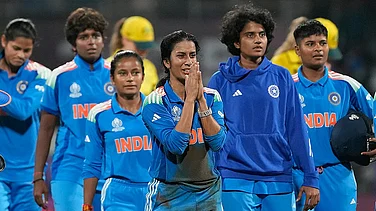Earlier this month, the Supreme Court released a handbook of gender-inclusive and gender-neutral terms “to assist judges and the legal community in identifying, understanding and combating stereotypes about women”. The important step taken by India’s top court reflected largely on the fight by thousands of LGBT activists around the world to be included in everyday discourse.
Gender is fluid. And language is not just a tool for communication. It is a reflection of how we as a society think and our attitudes towards people. Constant gendered references like “sir/madam”, “Mr/Mrs, “he/she” in our everyday language and grammar, that restrict it to the binary male and female groupings, are biased and discriminatory towards non-binary people, and can be alienating. A gender-neutral language then helps prevent the perpetration of stereotypes and sexism and promotes inclusivity.
Here is a guide on how to use a gender-neutral language that respects people across the spectrum:
1. Preferred Gender Pronouns – “They” Instead Of “He”, “She”
Preferred gender pronouns are a set of pronouns that an individual chooses to identify themselves with. However, in day-to-day life, it is impossible to guess what pronouns a person prefers. As a result, the singular third-person “they” was born. Instead of referring to people as “he” and “she” which makes one assign a gender, using “they” makes it neutral and respectful. In 2019, Merriam-Webster Dictionary amended its definition of “they” to include the singular pronoun, becoming the last of the major dictionaries to cover its nonbinary usage. Oxford English Dictionary also recognises the singular “they” to refer to “a person whose sex is not mentioned or not known” and “people who are non-binary”.
2. Gender-Neutral Prefixes, Or No Prefixes
The usage of prefixes like “Mr.” (mister), “Ms.” (miss) and “Mrs.” (missus) is dated. It also forces a person to be confined by the traditionally known genders of male and female. In addition to that, it also forces women (because for men it is only “Mr.”) to reveal their relationship status. As a result, millennials and Gen Z have stopped using these prefixes at all, or if it must be used, they prefer the prefix “Mx” to denote gender fluidity.
3. Greetings Must Be Welcoming For All
At gatherings, we often hear references like “ladies and gentlemen”, and “boys and girls”. These references are outdated and offensive to non-binary people and also to people who do identify as male or female but do not want to be referred to by their gender. As a result, it is important to start changing such narratives and start using inclusive and gender-neutral nouns such as “friends”, “folks” “everyone”, “students”, “colleagues” etc.
4. Gender-Neutral Occupational Titles
We live in a world that is still fighting patriarchy and one of the biggest impacts patriarchy has had on the English language is defining occupational titles with gendered suffixes like “man” – chairman, policeman, postman, etc – which makes us imagine them as male professions. Even if there is a female alternative with the suffix “--woman”, it is assumptive and still excludes the non-binary. These titles are rooted in stereotypes and they only make them more rampant. It calls for the urgency to start referring to job titles in a gender-neutral manner, switching the traditionally heard titles with “chairperson”, “police personnel”, “postal worker” and so on.
5. In Relationships
One of the biggest reasons that gave birth to the debate around using gender-neutral language is relationships, familial or romantic. Historical pairings such as “husband” and “wife”, “mother” and “father”, “brother” and “sister” etc come with gender baggage. In today’s world, relationships go beyond the binary genders and it is only fair to take forward the work started by LGBTQIA+ activists to be more inclusive.
Here are a few alternatives to use in place of the traditional pairings while referring to unknown and non-binary people. These alternatives are inclusive and respectful of their identity that may or may not be known to you.
- Instead of husband/wife and girlfriend/boyfriend, using “partner”
- Instead of mother or father, using “parent”
- Instead of brother or sister, using “sibling”
- Instead of niece or nephew, using “nibling”
6. Pregnant People
In common usage, we often refer to those expecting a child as “pregnant women”. It is important to understand that not all pregnant people are or identify as women. Transgender and non-binary people can also be pregnant and it is offensive to not include them. It signals discrimination and unwelcomeness. As a result, they must be referred to as “pregnant person/people” or “expectant person/people” or “birthing parent”.
7. Salutations
Often, formal announcements, official emails and letters start with “Dear Sir” or “Dear Madam/Ma’am”. However, when we use these salutations to address people, we fail to realise how outdated it sounds. Using these salutations are just as wrong as traditional greetings like “ladies and gentlemen” and “boys and girls” because they exclude the non-binary. Instead, it is preferred nowadays to address people by their name. Using “Dear [name]” instead of “sir” and “ma’am” makes it exclusive, and as a result, is much more accepted and equally as respectful.
But in case the name is not available, a few gender-neutral alternatives to use are – “To Whomsoever It May Concern”, “Dear [Job title/Department]”, “Hello”, “Hi there (for informal settings)”, “Good Morning/Afternoon/Evening”, “Good Day” and “Dear Valued Customer/Employee”.
8. Other Gendered Words And Their Alternatives
English is not a language that is dependent on gender. However, over the centuries, many words have become restricted to the binary genders and it is time to change that. The next time you visit a restaurant, address the person serving you as “server”, not “waiter” or “waitress”. The next time you talk about a person who just started college, call them “first-year student”, not “freshman”. In addition to these, it is also important to look at words like “man-made” that create a bias towards the male gender, and replace them with neutral words like “artificial”, “unnatural” or “machine-made”, whichever suits best.
9. Refraining From Gender-Insensitive Slang
In conversational language, we often refer to our friends as “guys”, “dude”, “bro” – words that by default assign the male gender which can be offensive for people who do not refer to themselves by that gender. Alternatives like “friends”, “folks”, “team” are gender-neutral and not discriminatory towards anyone. Meanwhile, “dude”, “bro”, “b*tch” and similar words are simply derogatory. These words also project men to be superior to women, while completely negating the existence of non-binary people. Instead, simply calling people by their name is exclusive, gender-neutral and respectful.
10. Gender In Foreign And Regional Languages
Gender becomes more complicated as we go beyond English and look into other foreign languages like French, Spanish, Arabic or regional Indian languages like Hindi, Gujarati and Marathi. LGBTQ+ activists and linguists have for years been working out a way to make regional languages inclusive for everyone. According to a Washington Post article, for Spanish speakers, it is now accepted to use “x” or "@” to create a gender-neutral noun – “Latinx” or “Latin@” – instead of the binary of Latino (male) or Latina (female).
When it comes to a language like Hindi, it becomes more complicated as every noun has a masculine or feminine gender. Some people have started accepting the third person form – for instance, “hum gaye the (we went)” instead of the masculine “mai gaya tha” or feminine “mai gayi thi” – a pattern also colloquially used by Hindi speakers in rural Bihar and Uttar Pradesh. However, non-binary people have protested against this as it is also the plural masculine form, making it biased towards the male gender. While the solutions to gender neutrality in regional languages still seem distant, what is more important is to continue the fight and keep looking for the right alternatives.


























